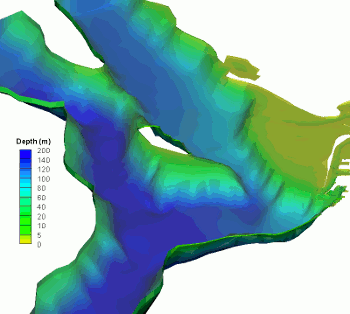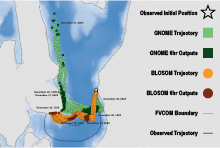SSM Oil Spill Transport
Overview

Washington transports 18.9 billion gallons of oil as cargo each year, primarily via vessel, rail, and pipeline. Of this total, 8.7 billion gallons are moved by vessel, including over 100 tankers and tank barges importing crude oil each year[1]. While tanker numbers have declined in the U.S. over the last decade, Canada is currently tripling the capacity of the Kinder Morgan Pipeline and expects to increase by as many as 34 tankers per month transiting the Strait of Juan de Fuca for overseas markets, carrying heavy diluted bitumen ("dilbit"). All this transport has the potential to cause an oil spill in the Salish Sea, which would have high consequences around the dense coastal communities and sensitive estuarine environment.
Projects

Pt. Wells Oil Spill Model Comparison
Hydrodynamics generated from the Salish Sea Model can be used to track particle movement, predicting where oil will physically move. This waterbody has complex circulation patterns that are very difficult reproduce but have a significant impact on the transport and flushing of contaminants. Water quality modeling also helps inform the buoyancy of oil particles, which is significant with dilbit, which has been shown to either sink or float depending on water conditions. The Salish Sea Model is currently undergoing grid refinement and robust calibration of surface flows in order to better support oil spill response and planning.